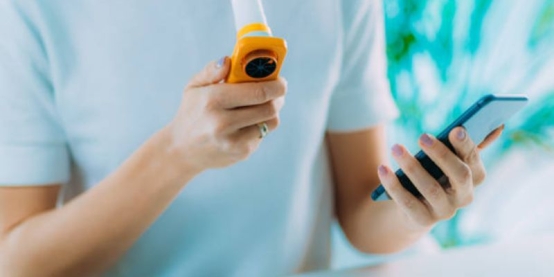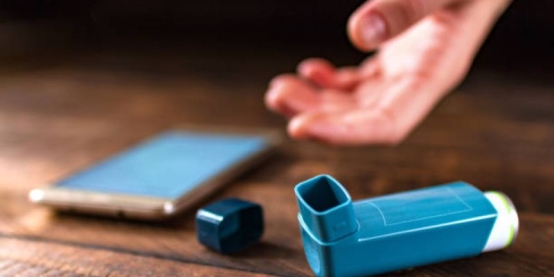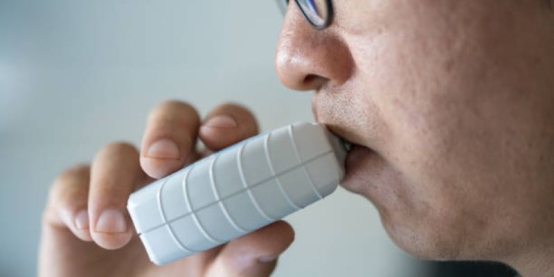Smart Inhalers: Revolutionizing Asthma Care
Asthma impacts over 260 million individuals globally, with current statistics indicating approximately 260.48 million existing cases. In spite of advancements, asthma-caused deaths continue to be substantial (≈ 436,000 worldwide) and a majority of those take place in low- and middle-income nations.
What Is a Smart Inhaler, Exactly?
A smart inhaler is an inhaler system that has been enhanced with digital technology to track, coach, and optimize asthma treatment. At a minimum, it combines:
Sensors that track when the inhaler is activated, and in some products, also quantify inhalation flow or technique
Wireless connectivity (Bluetooth, and sometimes WiFi) to send data from the device to a companion mobile app or cloud platform
An app / platform that displays usage history, offers reminders, feedback, and sometimes connects with health providers

Two general categories are:
Add-on devices / sensors: Attach to the existing inhaler canisters or devices (controller or rescue). They monitor usage (when you use the inhaler) and send that data to the app. Examples: Propeller Health's sensor for various inhalers.
In-built smart inhalers: They have the digital sensor/technology integrated in the body of the inhaler itself. They can also measure other parameters like inhalation flow, which helps in technique assessment. Example: Teva's Digihaler series.
Popular brands or platforms include:
Propeller Health: Add-on sensors + app + insights + provider access.
Teva Digihaler: In-built sensor inhalers.
Adherium / Hailie: Add-on sensor caps (i.e., "Hailie" sensor) for use in school-aged or adult populations.
How Smart Inhalers Work (Step-by-Step)
Here is a general order of how smart inhalers function in practice:
User takes a puff
The patient activates (presses) the inhaler, or in combined devices, the patient inhales. The event triggers the sensor, and it records a timestamp, and in a few instances location and inhalation flow or technique information.
Sensor transmits data to app / cloud
Through Bluetooth, the sensor sends the information to a smartphone app. The app records the history: dates/times used, which inhaler was used (controller or rescue), possibly environmental conditions (e.g. air quality or pollen) or location.
App analyzes data
The application may show the data: plots of daily inhaler use, number of rescue doses, controller doses missed. It may also give reminders ("Did you take your controller inhaler today?"), or alerts ("You used your rescue inhaler 3 times in the past 24 hours").
Feedback to patient and provider
The user can see when compliance is either good or poor; the app can help identify triggers (place, activity, weather) by correlating peaks of usage. Data can be exported to healthcare providers on some platforms so that doctors can monitor control, adjust treatment, or intervene earlier.
Integration with health records / ecosystems
In some systems, smart inhaler data can feed into Electronic Health Records (EHRs) or be incorporated into remote monitoring programs. This enables monitoring of population-level trends, or integration with other health data from inhaler use.
Impact on adherence / triggers tracking
Precise information (when and how often inhalers are used) helps to distinguish if symptoms are the result of poor adherence, poor technique, or environmental triggers. This clarity facilitates more efficient personalized asthma management.
Key Benefits of Smart Inhalers
Smart inhalers deliver a number of concrete benefits over traditional care. Evidence from clinical trials, real-world programs, and manufacturer data shows:
Improved medication adherence
Reminders and usage tracking allow patients to stay on their controller (preventive) inhalers. For example, Propeller Health has shown up to 58% improvement in medication adherence in certain studies.
Better asthma control and fewer exacerbations
Less rescue inhaler usage, more "reliever-free" days, fewer emergency visits or hospitalizations have been seen in studies using smart inhalers.
Personalized insights
Knowing when, where, and how often* inhalers are being used reveals patterns: maybe more rescue use on weekends, or in particular environments (pollution, pollen, cold). This allows trigger avoidance to be tailored and medication adjusted.
Better communication with clinicians
Shared information allows clinicians to see objective use rather than relying on patient recall, which is notoriously inaccurate. This can inform decision making.

Data-driven asthma management
With data collected, platforms can leverage algorithms or AI to predict deteriorating control, flag excessive rescue use, or suggest changes. This leads to more proactive than reactive care.
Real-world outcomes
Studies (e.g. randomized controlled trials) show that smart inhaler systems reduce rescue inhaler use, increase controller use, and improve overall asthma control compared with usual care without monitoring.
Are Smart Inhalers Safe and Accurate?
Smart inhalers are safe and provide valuable data, but with limitations.
Accuracy: Add-on sensors reliably sense actuation (pressing of the inhaler). Built-in sensors also measure inhalation flow; however, sensing if the inhalation was done correctly (e.g. adequate flow, coordination) is more difficult and some devices don't measure that.
Regulatory approvals: Some of the smart inhaler systems have received FDA or CE clearance. For example, Propeller's sensor for the Ellipta inhaler received FDA clearance.
Privacy and security of data: Collecting health usage information, location, etc., raises concerns about privacy. Patients and stakeholders often have concerns about who accesses information, how securely it's stored, whether shared with insurers or third parties. Studies of mHealth apps find many don't fully comply with privacy policies or render privacy policies difficult to discern.
Clinical evidence: A number of randomized controlled trials (RCTs) have demonstrated better adherence and asthma control using smart inhalers compared to usual care. However, most research is in high-income settings; less evidence is available from lower-income countries.
Cost and Availability
Cost and availability are relevant to consider for widespread use.
Typical price range: Smart inhaler add-on devices can cost anywhere from US$100 to US$500 per device, depending on the brand, features, battery life, etc.
Recurring expenses: There may be subscription fees for applications, replacement fees for components (sensors, batteries), or data plan fees.
Insurance / reimbursement: Smart inhalers are reimbursed by insurance or health systems in certain countries, especially when prescribed. In most places, they are still not standard and patients may pay out of pocket.
Key markets: US, Canada, UK, EU are a few of the major markets. Some of the players are expanding into other geographies. Availability is typically connected to countries having regulatory frameworks for medical devices and strong digital health infrastructure.
Cost-effectiveness: Some economic models suggest that smart inhalers are cost-effective in the long term through reduced hospitalization, emergency department use, and improved control. For example, the application of INCA smart inhaler in COPD (although the same principles would apply in asthma) showed cost savings of around €845 per patient per year in certain conditions.
Potential Drawbacks and Limitations
There is no ideal solution. The key limitations are:
Technology dependence: sensors need battery power; Bluetooth / connectivity must work; the phone must be charged, compatible, etc.
Technical issues: data loss, app crashes, slow synchronization, sensor misalignment or failure.
Privacy concerns: as mentioned, risk of data breaches, unclear policies, third-party sharing, or misuse. For some users, these may be deal breakers.
Smartphone requirement: Requires compatible smartphone, occasionally updated OS, adequate storage, reliable internet. Some elderly or low-income patients may be impeded.
Cost barrier / inequity: Upfront cost, continued maintenance costs, and the fact that it is not included in most insurance coverage may limit access, especially in under-resourced communities.
Limited availability in many places: Some products are not yet approved or available everywhere.
Behavioral limitation: Uptake is subject to patient willingness despite reminders and data. Some will ignore reminders, or the extra burden of complying with app notifications.

What Users Need to Know Before Choosing a Smart Inhaler
Users or caregivers should consider the following before using a smart inhaler:
Is the product compatible with the already prescribed inhaler(s) (rescue, controller)?
What is being measured by the sensor: usage only, or technique / flow?
Which phone OS and version are required?
What is the device + app + any subscription cost?
What is battery life and sensor longevity?
How does the app handle privacy: storage, data sharing, access by third party or insurer?
Is there healthcare provider buy-in to view and act on the data?
Getting the Best from a Smart Inhaler System
To get the best out of:
Use the controller inhaler as prescribed, even when symptoms are mild (consistency is key).
Monitor app feedback regularly—look for trends of overuse, missed doses, environmental triggers.
Share the information with your healthcare provider; let them titrate therapy based on objective information.
Use good inhaler technique—devices that just count actuations won't correct technique errors unless embedded sensors enable that.
Keep smartphone and app updated; track permissions (privacy/security).
Breathing Easier: Why Smart Inhalers Are Likely to Become the New Normal in Asthma Management
Smart inhalers offer a bridge between patient behavior, clinical practice, and digital health. They solve basic problems in asthma management: forgotten doses, unreported rescue use, and poor technique. Together with increasing acceptance of digital health, increasing evidence, falling costs, and increasing regulatory support, smart inhalers will be making the shift from "nice-to-have" to standard components of asthma management.
For patients, that means fewer exacerbations, easier breathing on a daily basis, fewer hospital trips. For health systems, less spending, better control over population health. Smart inhalers are no magic bullet, but they are rapidly becoming one of the most promising tools in the fight to manage asthma.